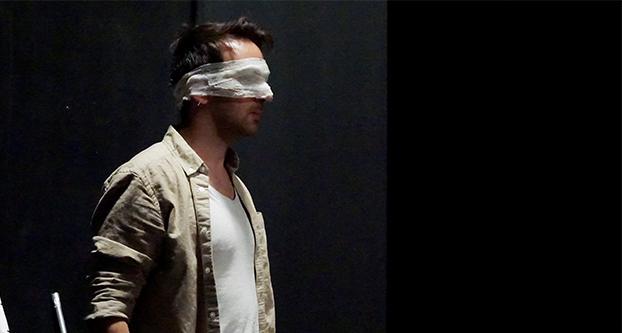Tragedy has been a source of inspiration for artists since as early as 400 B.C., with works from Sophocles and other Greek tragedians, and it continues to be a source of inspiration to this day with “A Particle of Dread.”
The upcoming Fresno State University Theatre production of the play by the celebrated playwright Sam Shepard takes the familiar myth of “Oedipus Rex” and updates it for a newer millennium.
“This particular adaptation that Sam Shepard did looks at if we were dealing or do we still deal with some of the things that Greek tragedies deal with like not wanting to accept truth of tragic circumstances or situations that may seem very out of the ordinary,” said director J. Daniel Herring.
In the original play, “Oedipus Rex” by Sophocles, Oedipus’ quest for the truth behind the murder of the previous king, Laius, leads to the unearthing of his own tragic circumstances.
“When you look back at the Greek tragic heroes and all of that, the idea … is that when an audience would view a Greek tragedy, that they would go out and behave better in life,” Herring said.
Similarly, Shepard’s other works feature characters in unconventional situations and their own tragic actions. “Buried Child” focuses on a dysfunctional family with similar themes of violence, sex and truth and the complications that arise as a result.
In an interview with Laura Barton from The Guardian, Shepard said that his inspiration comes “not so much by landscapes but by its connections to the past.”
The importance of setting and the history behind it plays a big role in this production of “A Particle of Dread,” which uses only one setting to link together the characters from different time periods.
“I’m really big on reincarnation and repetition throughout life and cycles,” said Thuy Duong, who plays Antigone and Annalee. “Like if one person lived one life, how different was their first life compared to their new life? Is it the same fate all over again?”
Using the same setting allows Shepard to link these classic characters to contemporary counterparts, sometimes mixing the two sets of characters in the same scene.
Unlike other plays that unfold chronologically, Shepard often writes in a nonlinear structure which is seen in this play. This mixing of a constant setting with major shifts in time leads to the creation of a narrative that shows the similarities between ancient times and the modern day.
Herring prepares for ‘A Particle of Dread’
Each year faculty directors submit about three plays with considerations on what types of plays to produce. They look for an American classic, a musical or Shakespeare play, a play with a focus on a specific culture and, ultimately a newer, out-of-the ordinary selection.
“We always try to do something that’s a little fresh and new and a different perspective, and so, hence, why we picked ‘A Particle of Dread’ by Sam Shepard,” Herring said.
Preparation for this production began at the start of this semester with rehearsals beginning the Sunday after the first week of school. The actors have approximately 15 hours of rehearsal a week, while preparation for the director begins months in advance.
“The minute I know I’m going to direct [a play], I begin to formulate conceptual ideals and visions for how I want to do the play from the very, very beginning,” said Herring, whose bag is filled with future plays and a file filled with notes.
Preparation for the play is constantly in motion even when those involved are not in a rehearsal.
“Even if that day I’m not sitting down with the script and dealing with it for hours, there might be a moment where I’m literally doing something like having dinner with somebody and I suddenly write down on a napkin or scrap piece of paper an idea that hits me because I don’t want to lose it,” Herring said.
Actors prepare for ‘A Particle of Dread’
With the many variables that come into play with this production of “A Particle of Dread,” such as a nonlinear storyline to the multiple characters played by one actor, the actors faced new challenges.
“It’s been confusing that in the actual rehearsal process, the scenes just go back and forth in time sometimes, and they hop from different characters,” said Steven Weatherbee, who plays Oedipus and Otto. “And so it gets really confusing sometimes [knowing] when to run on.”
With multiple actors playing variations of the same character, the students prepared for their characters differently than in other plays.
“It’s been pretty tough [preparing for this role] because they’re three different characters. Even though they do embody the same character in the end, they are three separate characters, and they have to be treated and viewed as such,” said Anthony teNyenhuis, who plays the roles of Laius, Lawrence and Langos.
One way that the actors differentiate the characters is through nuances that they practice in order to give the roles more depth. Both teNyenhuis and Weatherbee have taken steps in order to distinguish their different roles such as through different vocalizations and the physicality of the characters.
Some of the actors auditioned for the play without any context regarding the themes or topic, surprising themselves after reading the script.
“If you’re going to come to this show,” said Gian Console, who plays Uncle Del, Traveler and Tiresias, “get ready.”




